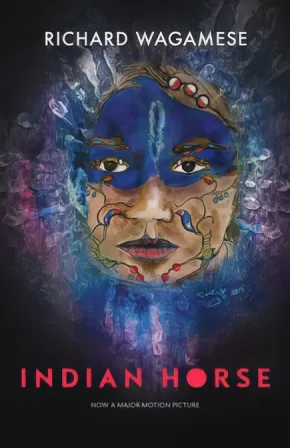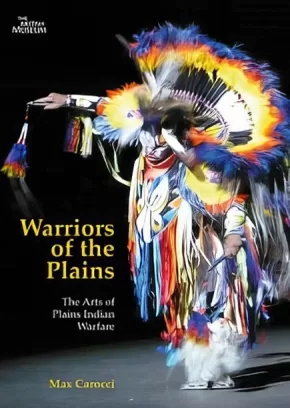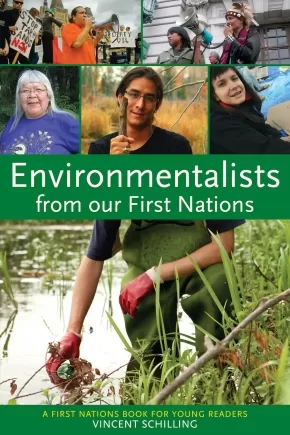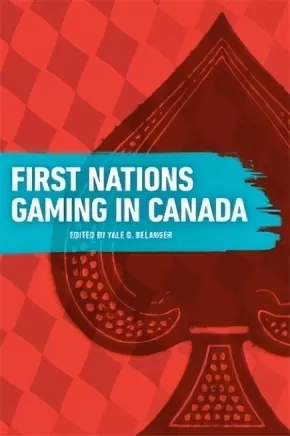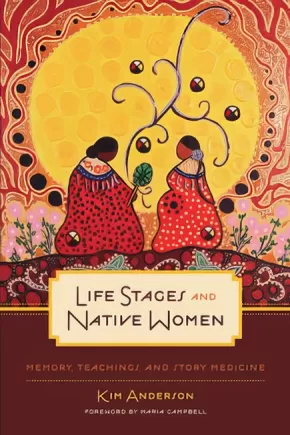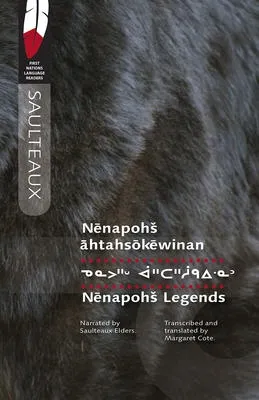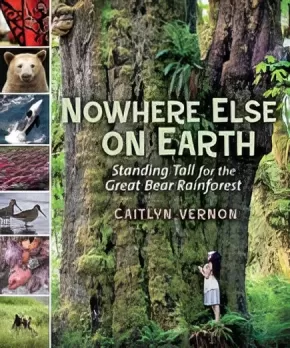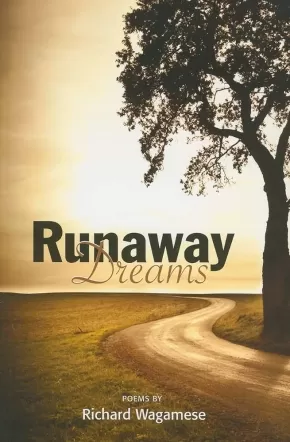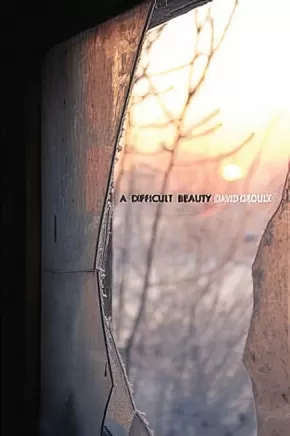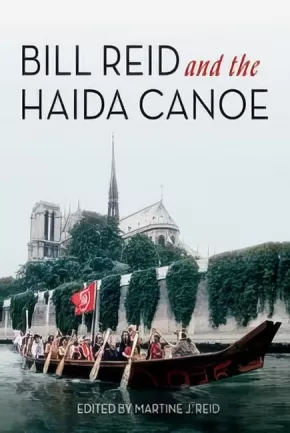
Canadian Indigenous Books for Schools 8 - 12 2012-2013
1
-
15
of
21 Results;
Sort By
Go To
of 2
Indian Horse (Special Edition)
$21.95
Format:
Paperback
Text Content Territories:
Indigenous Canadian; First Nations; Anishinaabeg; Ojibway;
ISBN / Barcode: 9781771621908
Synopsis:
Synopsis:
Saul Indian Horse has hit bottom. His last binge almost killed him, and now he’s a reluctant resident in a treatment centre for alcoholics, surrounded by people he’s sure will never understand him. But Saul wants peace, and he grudgingly comes to see that he’ll find it only through telling his story. With him, readers embark on a journey back through the life he’s led as a northern Ojibway, with all its joys and sorrows.
With compassion and insight, author Richard Wagamese traces through his fictional characters the decline of a culture and a cultural way. For Saul, taken forcibly from the land and his family when he’s sent to residential school, salvation comes for a while through his incredible gifts as a hockey player. But in the harsh realities of 1960s Canada, he battles obdurate racism and the spirit-destroying effects of cultural alienation and displacement. Indian Horse unfolds against the bleak loveliness of northern Ontario, all rock, marsh, bog and cedar. Wagamese writes with a spare beauty, penetrating the heart of a remarkable Ojibway man.
Awards
- 2013 Burt Award for First Nations, Métis, and Inuit Literature
- 2013 First Nation Communities Read Award
Reviews
"Richard Wagamese is a master storyteller, who blends the throb of life with spiritual links to the land, hard work, and culture to find success, his words take you into the soul of Indian Horse, to experience his pain, his growing resentments, his depression, and his fear which has to be faced if he is to regain the joy of life. This book is meant for youth, adults, and elders, to be shared, to be lived, and to be treasured for the clear message of hope and the need to go the distance." — Wawatay News
“…The hockey chapters are compelling; they evoke Sherman Alexie’s fiction that examines contemporary life on American Indian reservations through the lens of basketball. But it is as a story of reconciliation that this novel reveals Wagamese’s masterful subtly…In a single image, Wagamese complicates in blinding ways the entire narrative; in a single page, Indian Horse deepens from an enjoyable read to a gripping critique of Canada.” — Kyle Carsten Wyatt, The Walrus, 2012
Educator Information
Grades 10-12 BC English First Peoples resource for units on Lost People, Reconciliation, and Place-Conscious Learning.
Caution: Substance Abuse, Mature Content
Additional Information
232 pages | 5.50" x 8.50"
This special edition of Richard Wagamese’s novel Indian Horse has been released to coincide with the release of the film Indian Horse in the spring of 2018.
Aboriginal Music in Contemporary Canada: Echoes and Exchanges
$55.00
Editors:
Format:
Hardcover
Text Content Territories:
Indigenous Canadian; First Nations; Inuit; Métis;
ISBN / Barcode: 9780773539518
Synopsis:
Synopsis:
First Nations, Inuit, and Métis music in Canada is dynamic and diverse, reflecting continuities with earlier traditions and innovative approaches to creating new musical sounds. Aboriginal Music in Contemporary Canada narrates a story of resistance and renewal, struggle and success, as indigenous musicians in Canada negotiate who they are and who they want to be. Comprised of essays, interviews, and personal reflections by Aboriginal and non-Aboriginal musicians and scholars alike, the collection highlights themes of innovation, teaching and transmission, and cultural interaction. Individual chapters discuss musical genres ranging from popular styles including country and pop to nation-specific and intertribal practices such as powwows, as well as hybrid performances that incorporate music with theatre and dance. As a whole, this collection demonstrates how music is a powerful tool for articulating the social challenges faced by Aboriginal communities and an effective way to affirm indigenous strength and pride. Juxtaposing scholarly study with artistic practice, Aboriginal Music in Contemporary Canada celebrates and critically engages Canada's vibrant Aboriginal music scene. Contributors include Véronique Audet (Université de Montreal), Columpa C. Bobb (Tsleil Waututh and Nlaka'pamux, Manitoba Theatre for Young People), Sadie Buck (Haudenosaunee), Annette Chrétien (Métis), Marie Clements (Métis/Dene), Walter Denny Jr. (Mi'kmaw), Gabriel Desrosiers (Ojibwa, University of Minnesota, Morris), Beverley Diamond (Memorial University), Jimmy Dick (Cree), Byron Dueck (Royal Northern College of Music), Klisala Harrison (University of Helsinki), Donna Lariviere (Algonquin), Charity Marsh (University of Regina), Sophie Merasty (Dene and Cree), Garry Oker (Dane-zaa), Marcia Ostashewski (Cape Breton University), Mary Piercey (Memorial University), Amber Ridington (Memorial University), Dylan Robinson (Stó:lo, University of Toronto), Christopher Scales (Michigan State University), Gilles Sioui (Wendat), Gordon E. Smith (Queen's University), Beverly Souliere (Algonquin), Janice Esther Tulk (Memorial University), Florent Vollant (Innu) and Russell Wallace (Lil'wat).
Additional Information
520 pages | 6.14" x 9.25"
Authenticity Note: While the editors of this book are not Indigenous, the majority of contributors are Indigenous; therefore, this book has received the Authentic Indigenous Text label.
No-Nonsense Guide to Indigenous Peoples (Second Edition) (6 in Stock) - ON SALE!
$10.00 $13.95
Format:
Paperback
Text Content Territories:
Indigenous;
ISBN / Barcode: 9781926662961
Synopsis:
Synopsis:
Since the first edition of the No-Nonsense Guide to Indigenous Peoples was published in 2003, much has changed. The United Nations General Assembly has adopted the UN Declaration on the Rights of Indigenous Peoples. Indigenous rights have become an increasingly important subject in international law, with Bolivia's first indigenous president, Evo Morales, arguing on the international stage from an indigenous perspective, and introducing policies benefiting indigenous communities through land reforms and redistribution of wealth. Moreover, there has been a surge in indigenous activism and advocacy, with the growth of a global indigenous rights industry, the effects of which are not always positive. This updated edition reflects the changing context and examines the developments as well as the tensions and contradictions, and includes as many direct voices as possible.
Additional Information
144 pages | 4.38" x 7.00"
Warriors of the Plains: The Arts of Plains Indian Warfare
$42.95
Format:
Paperback
Text Content Territories:
Indigenous American; Indigenous Canadian;
ISBN / Barcode: 9780773540040
Synopsis:
Synopsis:
In this richly illustrated study of a complex society, Max Carocci delves into the history of the North American Plains Indian warrior cultures, examining their ongoing legacy, continuity, and the change between historic war practices and contemporary Native American military associations. Warriors of the Plains skilfully interweaves a survey of North American Plains Indian history with a generously detailed examination of Plains Indian warrior art - weapons, amulets, clothing, and ceremonial objects - with particular emphasis on their ritual use and symbolic meanings. Replete with both modern and archival photographs from the British Museum, this book offers a novel approach to a fascinating subject, while integrating history, anthropology, and personal narratives. Showcasing meticulous scholarship and the impressive collection of the British Museum, Warriors of the Plains is a comprehensive and significant contribution to the study of North American History.
Environmentalists from our First Nations
$10.95
Format:
Paperback
Text Content Territories:
Indigenous American; Indigenous Canadian;
ISBN / Barcode: 9781897187982
Synopsis:
Synopsis:
Like the other books in the First Nations Series for Young Readers, this book offers ten short and engaging biographies of First Nations/Native activists who advocate not only for the environment but for Native rights. Their stories are full of highs and lows, triumphs and setbacks. Environmental trailblazers, these men and women are role models for children everywhere.
The men and women profiled here are united by their work to protect the environment and to support indigenous rights. Their stories take us from the Arctic National Wildlife Refuge in Alaska to the Black Mesa in Arizona.
Melina Laboucan-Massimo uses her passion to stop oil extraction in Alberta’s tar sands.
Winona LaDuke is a voice for reclaiming Native lands, advocating renewable energy resources, and protecting Native cultures.
Clayton Thomas-Muller is a dynamic advocate for indigenous self-determination and campaigner against tar sands extraction.
Ben Powless brings his youthful energy and skills to addressing climate change issues.
Tom Goldtooth protects sacred sites and organizes global direct-action campaigns for the environment.
Grace Thorpe is a grandmother who dedicated her retirement years to keeping Native reservations from becoming nuclear waste dumps.
Sarah James is a voice from northern Alaska defending the Porcupine caribou herd and the Arctic National Wildlife Refuge.
Enei Begaye & Evon Peter are married activists who work as a team on environmental issues and sustainable strategies for Native people.
Klee Benally uses the media to empower Native communities in their fight for environmental justice.
Teague Allston works to ensure a tribal voice is heard in Washington DC.
Reviews
"These short biographies of environmentalists are sure to engage a whole classroom of readers. From the focus on a particular environmental crisis, to a description of each person's native heritage, to the writing style and level, the stories are accessible to readers young and old." — Canadian Teacher Magazine, March 2012
Educator & Series Information
This book is part of the First Nations Series for Young Readers. Each book is a collection of biographies of First Nations, Métis, and Inuit women and men who are leaders in their fields of work, in their art, and in their communities. For ages 9-14.
Additional Information
128 pages | 6.00" x 9.00"
First Nations Gaming in Canada
$27.95
Editors:
Format:
Paperback
Text Content Territories:
Indigenous Canadian; First Nations;
ISBN / Barcode: 9780887557231
Synopsis:
Synopsis:
While games of chance have been part of the Aboriginal cultural landscape since before European contact, large-scale commercial gaming facilities within First Nations communities are a relatively new phenomenon in Canada. First Nations Gaming in Canada is the first multidisciplinary study of the role of gaming in indigenous communities north of the 49th parallel. Bringing together some of Canada’s leading gambling researchers, the book examines the history of Aboriginal gaming and its role in indigenous political economy, the rise of large-scale casinos and cybergaming, the socio-ecological impact of problem gambling, and the challenges of labour unions and financial management. The authors also call attention to the dearth of socio-economic impact studies of gambling in First Nations communities while providing models to address this growing issue of concern.
Life Stages and Native Women: Memory, Teachings, and Story Medicine
$27.95
Format:
Paperback
Text Content Territories:
Indigenous Canadian; Métis; First Nations; Cree (Nehiyawak); Anishinaabeg;
ISBN / Barcode: 9780887557262
Synopsis:
Synopsis:
A rare and inspiring guide to the health and well-being of Aboriginal women and their communities.
The process of "digging up medicines" - of rediscovering the stories of the past - serves as a powerful healing force in the decolonization and recovery of Aboriginal communities. In Life Stages and Native Women, Kim Anderson shares the teachings of fourteen elders from the Canadian prairies and Ontario to illustrate how different life stages were experienced by Métis, Cree, and Anishinaabe girls and women during the mid-twentieth century. These elders relate stories about their own lives, the experiences of girls and women of their childhood communities, and customs related to pregnancy, birth, post-natal care, infant and child care, puberty rites, gender and age-specific work roles, the distinct roles of post-menopausal women, and women's roles in managing death. Through these teachings, we learn how evolving responsibilities from infancy to adulthood shaped women's identities and place within Indigenous society, and were integral to the health and well-being of their communities. By understanding how healthy communities were created in the past, Anderson explains how this traditional knowledge can be applied toward rebuilding healthy Indigenous communities today.
Additional Information
|
Nenapohs Legends
$19.95
Format:
Paperback
Text Content Territories:
Indigenous Canadian; First Nations; Anishinaabeg; Ojibway; Saulteaux;
Grade Levels: University/College;
ISBN / Barcode: 9780889772199
Synopsis:
Synopsis:
These seven tales are the traditional teaching stories of Nenapohs, the Saulteaux culture hero and trickster. Oral in origin, they have been passed on through generations by the traditional teachers, the Elders.
For the first time, they are published and made available in Nahkawewin or Saulteaux, the westernmost dialect of the Ojibwe language. Each story is illustrated and is presented in both Standard Roman Orthography and syllabics, with English translation. The book also includes a pronunciation guide and a Saulteaux-to-English glossary.
Educator & Series Information
Nenapohs Legends is part of the First Nations Language Readers series. With a mix of traditional and new stories, each First Nations Language Reader introduces an Indigenous language and demonstrates how each language is used today. The University of Regina Press’s long-term goal is to publish all 60+ Indigenous languages of Canada.
Additional Information
112 pages | 5.50" x 8.50" | Narrated by Saulteaux Elders, Transcribed and Translated by Margaret Cote
Nowhere Else on Earth: Standing Tall for the Great Bear Rainforest (2 in Stock) - ON SALE!
$18.00 $22.95
Format:
Paperback
ISBN / Barcode: 9781554693030
Synopsis:
Synopsis:
You don't have to live in the Great Bear Rainforest to benefit from its existence, but after you read Nowhere Else on Earth you might want to visit this magnificent part of the planet. Environmental activist Caitlyn Vernon guides young readers through a forest of information, sharing her personal stories, her knowledge and her concern for this beautiful place.
Full of breathtaking photographs and suggestions for ways to preserve this unique ecosystem, Nowhere Else on Earth is a timely and inspiring reminder that we need to stand up for our wild places before they are gone.
Visit the website for some great downloadable resources!
http://www.greatbearrainforest.ca/
Runaway Dreams (14 in Stock) - ON SALE
$12.00 $15.95
Format:
Paperback
Text Content Territories:
Indigenous Canadian; First Nations; Anishinaabeg; Ojibway;
ISBN / Barcode: 9781553801290
Synopsis:
Synopsis:
Having developed a large reputation for his many novels and nonfiction works, Richard Wagamese now appears before us as a poet, with a collection of stunning poems ranging over a broad landscape. He begins with an immersion in the immemorial landscape where “the ancient ones stand at your shoulder . . . making you a circle / containing everything.” These are Medicine teachings told from the experience of one who lived and still lives them. He describes his life on the road when he repeatedly ran away at an early age, and the beatings he received when the authorities tried “to beat the Indian right out of me.” Yet even in the most desperate situations, Wagamese shows us Canada as seen through the eyes and soul of a well-worn traveller, with his love of country, his love of people. Through it all, there are poems of love and music, the language sensuous and tender.
Additional Information
100 pages | 9.00" x 6.00"
Seeing Red: A History of Natives in Canadian Newspapers
$27.95
Format:
Paperback
Text Content Territories:
Indigenous Canadian;
ISBN / Barcode: 9780887557279
Synopsis:
Synopsis:
The first book to examine the role of Canada’s newspapers in perpetuating the myth of Native inferiority. Seeing Red is a groundbreaking study of how Canadian English-language newspapers have portrayed Aboriginal peoples from 1869 to the present day. It assesses a wide range of publications on topics that include the sale of Rupert’s Land, the signing of Treaty 3, the North-West Rebellion and Louis Riel, the death of Pauline Johnson, the outing of Grey Owl, the discussions surrounding Bill C-31, the “Bended Elbow” standoff at Kenora, Ontario, and the Oka Crisis. The authors uncover overwhelming evidence that the colonial imaginary not only thrives, but dominates depictions of Aboriginal peoples in mainstream newspapers. The colonial constructs ingrained in the news media perpetuate an imagined Native inferiority that contributes significantly to the marginalization of Indigenous people in Canada. That such imagery persists to this day suggests strongly that our country lives in denial, failing to live up to its cultural mosaic boosterism.
Additional Information
336 pages | 6.00" x 9.00"
Shannen and the Dream for a School
$16.95
Format:
Paperback
Text Content Territories:
Indigenous Canadian; First Nations; Cree (Nehiyawak); Swampy Cree ; Attawapiskat;
ISBN / Barcode: 9781926920306
Synopsis:
Synopsis:
This is the true story of Shannen Koostachin and the people of Attawapiskat, a Cree community in Northern Ontario, who have been fighting for a new school since 1979, when a fuel spill contaminated their original school building.
It is 2008, and thirteen-year-old Shannen and the other students at J.R. Nakogee Elementary are tired of attending class in portables that smell and don’t keep out the freezing cold winter air. They make a YouTube video describing the poor conditions, and their plea for a decent school gains them attention and support from community leaders and children across the country. Inspired, the students decide to turn their grade-eight class trip into a visit to Ottawa, to speak to the Canadian government. Once there, Shannen speaks passionately to the politicians about the need to give Native children the opportunity to succeed. The following summer, Shannen is nominated for the International Children’s Peace Prize. Her passion and that of the other students makes politicians stand up and take notice, and becomes a rallying point for the community and for the country.
Shannen will never see her dream fulfilled. Tragically, she was killed in a car crash in 2010. Her family, friends, and supporters are continuing to fight and to honor her memory as they work for equality for children in communities everywhere.
Awards
- In 2012-2013 Shannen and the Dream for a School was the award recipient for First Nation Communities Read.
Educator & Series Information
This book is part of the Kids' Power Series.
Recommended for ages 9 to 13.
Authenticity Note: This book has received the Authentic Indigenous Text label as it is written by Janet Wilson with the participation and support of members of the Attawapiskat community.
Indigenous Screen Cultures in Canada (1 in Stock) - ON SALE!
$22.00 $27.95
Editors:
Format:
Paperback
Text Content Territories:
Indigenous Canadian;
ISBN / Barcode: 9780887557187
Synopsis:
Synopsis:
Indigenous media challenges the power of the state, erodes communication monopolies, and illuminates government threats to indigenous cultural, social, economic, and political sovereignty. Its effectiveness in these areas, however, is hampered by government control of broadcast frequencies, licensing, and legal limitations over content and ownership.
Indigenous Screen Cultures in Canada explores key questions surrounding the power and suppression of indigenous narrative and representation in contemporary indigenous media. Focusing primarily on the Aboriginal Peoples Television Network, the authors also examine indigenous language broadcasting in radio, television, and film; Aboriginal journalism practices; audience creation within and beyond indigenous communities; the roles of program scheduling and content acquisition policies in the decolonization process; the roles of digital video technologies and co-production agreements in indigenous film making; and the emergence of Aboriginal cyber-communities.
Additional Information
200 pages | 6.00" x 9.00"
A Difficult Beauty
$17.00
Format:
Paperback
Text Content Territories:
Indigenous Canadian;
ISBN / Barcode: 9781894987578
Synopsis:
Synopsis:
David Groulx’s latest collection offers his readers a handful of poems as cutting and brilliant as glass shards, offering glimpses of the anger, pain and lost beauties of his ancestors. These poems cut deep with their clear-eyed honesty, their stripped away pain and suffering. A subtle weaving of black humour and fleeting touches of beauty, as well at the careful craftsmanship of the writing make these poems iconic. This is a collection that should not be missed.
Reviews
"This collection of poetry is a passionate snapshot of poignant aspects of life on the rez depicted in simple scenes that are propelled forward with a sparse economy of language. It is little wonder that Groulx has won awards for his poetry and it has appeared globally in over one hundred periodicals." - Canadian Literature
Bill Reid and the Haida Canoe
$29.95
Editors:
Format:
Paperback
Text Content Territories:
Indigenous Canadian; First Nations; Haida;
ISBN / Barcode: 9781550175585
Synopsis:
Synopsis:
Northwest Coast peoples were maritime engineers who mastered the art of building dugout canoes from gigantic red cedars, using only tools made from bone, stone, and wood. Ubiquitous, these elegant craft were used for everyday and ceremonial purposes, for fishing, hunting and trading, for feasting and potlatching, and in warfare—they were the keys that unlocked the treasure chest of the North Pacific.
Bill Reid and the Haida Canoe tells the story of the Northwest Canoe from its zenith in pre-contact times, through its decline in the late nineteenth century, to its revival in Lootaas (Wave Eater) which Bill Reid built for Expo '86, to its culmination with the Tribal Canoe Journeys of the twenty-first century and The Spirit of Haida Gwaii sculptures. Bill Reid expressed awe for the traditional Haida canoe and what it represents visually, symbolically, and culturally. In his words, "Western art starts with the figure—West Coast Indian art starts with the canoe."
The successive journeys of Lootaas were significant stages in Bill Reid's work, which culminated with the iconic sculpture The Spirit of Haida Gwaii, a monumental bronze canoe filled to overflowing with creatures of Haida mythology (currently featured on the Canadian twenty-dollar bill). As a final creative act Bill Reid requested that, at the end of his life, his ashes be transported in Lootaas paddled by a crew of his Haida friends and relatives to Tanu, his grandmother's village in Gwaii Haanas.
The story is told through writings and artworks by Bill Reid, vivid photographs by Phillip Hersee, Ulli Steltzer, Robert Semeniuk and others, texts by James Raffan, Martine J. Reid, and Mike Robinson and first-hand accounts by First Nations paddlers.
Bill Reid and the Haida Canoe is a companion book to the Bill Reid and the Haida Canoe exhibition mounted by the Bill Reid Gallery of Northwest Coast Art and touring to the Canadian Canoe Museum in Peterborough, Ontario.
Authenticity Note: Because of this work's contributions of writings and artworks from Bill Reid and other First Nations peoples on Indigenous topics, it has received the Authentic Indigenous Text and Authentic Indigenous Artwork labels.
Sort By
Go To
of 2

